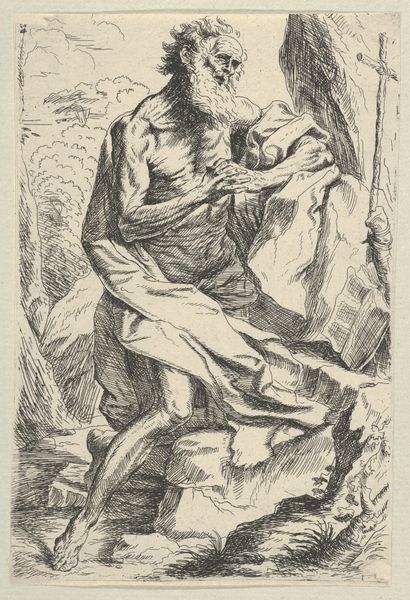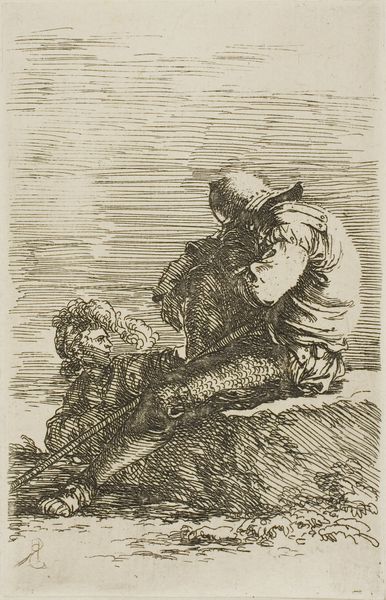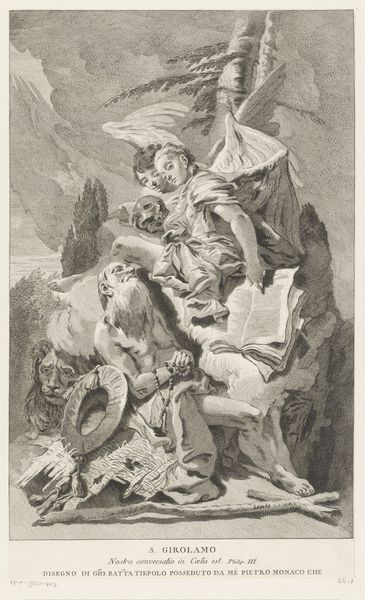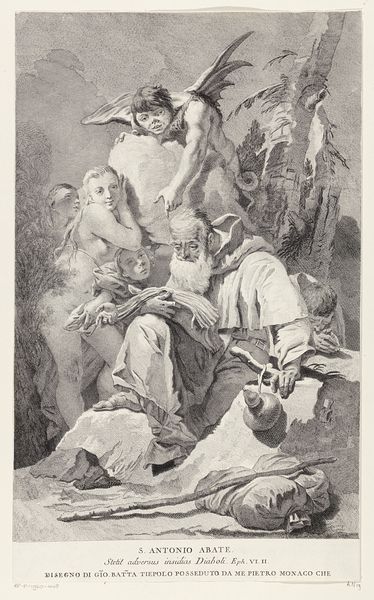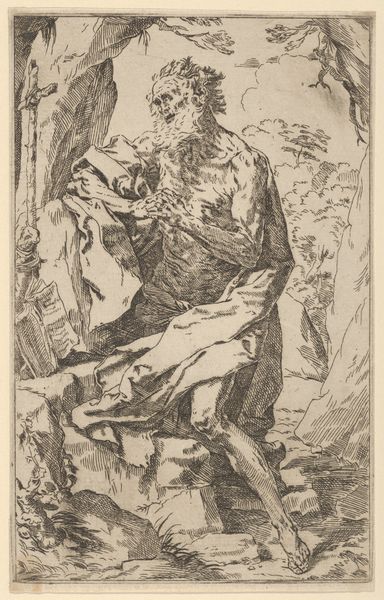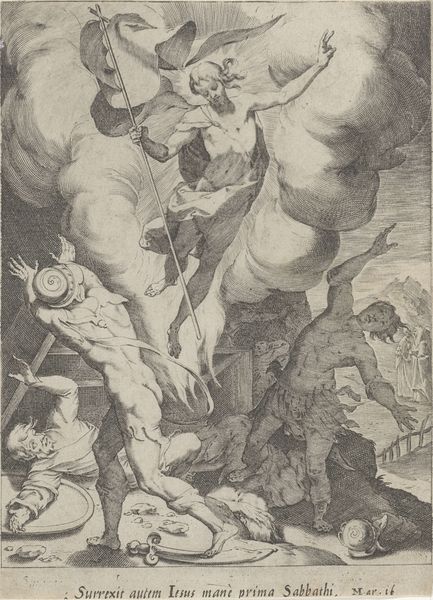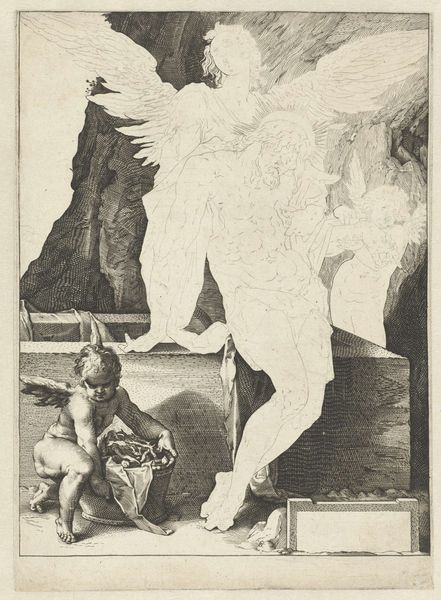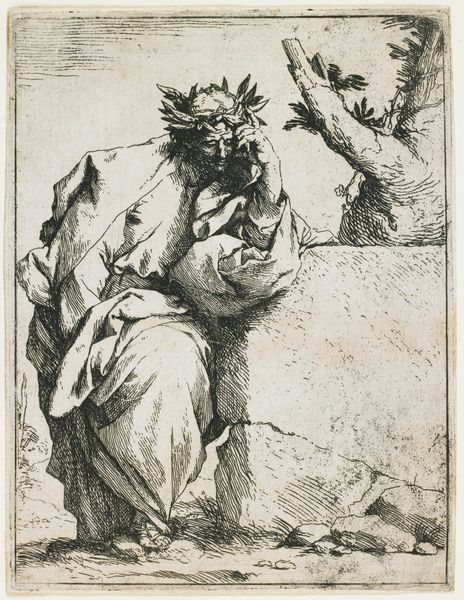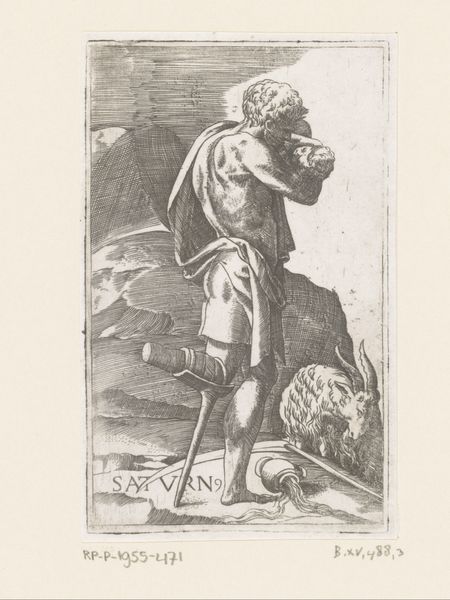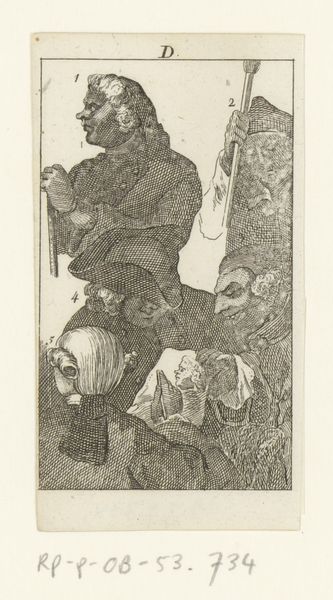
Dimensions: height 168 mm, width 110 mm
Copyright: Rijks Museum: Open Domain
Curator: Giovanni Battista Tiepolo, a towering figure in Venetian painting, is believed to have created this etching, titled "Evangelist Marcus met leeuw", sometime between 1741 and 1799. Editor: My first impression? A rumpled scholar, like a lion who's given up on roaring, settled into comfy introspection. All those etched lines make it look almost like a fantastic architectural rendering. Curator: Indeed! Tiepolo, a master of light and shadow, used etching to create incredibly detailed textures. Look closely, and you’ll observe how he employed different densities of lines to sculpt form and volume, turning a humble print into a powerhouse of visual drama. It shows how prints gained importance in spreading art. Editor: Exactly! But those lines... they aren't just descriptive. The wild cross-hatching around the lion practically vibrates with a kind of untamed energy. It reminds me how the old masters would've relished any chance for accessible copies, like digital art of the era. It almost doesn't matter the meaning of subject when the method sings so loudly. Curator: Speaking of meaning, in religious art Saint Mark, one of the four evangelists, is most definitely associated with the winged lion. His Gospel emphasizes the themes of royalty and resurrection—perhaps depicted here—while hinting at Venice's symbolic animal with his depiction as well. Editor: Right! There's this interesting contrast that hits me. It captures two different sides of religious thought and spirituality. Here's this huge symbolic animal representing royalty and pride versus the human element. The Saint just seems, I don't know, quietly contemplative or resigned or even just, very very tired? Curator: The way Tiepolo composed it makes you notice more! Etchings played a critical role in disseminating artistic ideas to a wider public at that time, outside traditional patrons of church and state. "Evangelist Marcus met leeuw" allowed viewers everywhere to consider spirituality on their own terms and not merely the Catholic Church! Editor: Yes! The image's lasting impact is because of its accessibility. Something that seems profound can also just be so easy to find! Curator: The circulation of printed imagery undoubtedly played a crucial role in shifting power. Now it just hits differently understanding prints' vital democratic role during this moment. Editor: An everyday reminder from Venetian power... that a tired lion has his strength even with a scribe by his side. A simple scene in black and white but powerful as it once circulated and today.
Comments
No comments
Be the first to comment and join the conversation on the ultimate creative platform.
